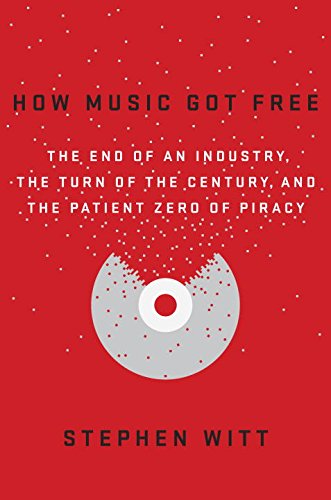
Carl Wilson

AT THE BEGINNING OF DECEMBER, music-streaming behemoth Spotify laid off 1,500 employees. It was its third set of axings last year in response to the tightening of capital markets, altogether adding up to more than a quarter of its global staff. But this round was different, because it included Glenn McDonald. 
IN THE AWARDS-SWEEPING 2021 documentary Summer of Soul, a man named Darryl Lewis recalls his first Sly and the Family Stone encounter, at the Harlem Cultural Festival of 1969. In those days, he says, “When you saw a Black group, what you expected to see was, generally speaking, all men, all dressed in matching suits, ready even before they hit the stage to perform.” But here, Sly and company “kind of saunter out,” men and women, Black and white, a living quilt of psychedelic patterns, knit caps, and sundry frippery. “The instruments weren’t tuned,” Lewis says. “You wonder, What are they 
RICKIE LEE JONES’S BLOND HEAD IS ATILT as she lights a French cigarette, crowned with an off-center red beret. It’s that image of the artful-dodger “duchess of coolsville” (as Time dubbed her) on the cover of her eponymous 1979 debut that became iconic to a public who still recalls her mainly for that year’s jazzy top-10 single “Chuck E’s in Love.” It was a sell, but one close to the reality of this former teen street kid and, more recently, poverty-line Venice Beach bohemian. Jones rejected the 1970s “glamour-puss” gloss that was being urged on her and brought her own 
RICHARD LINKLATER IS A DIRECTOR I CARE A LOT ABOUT, but, sacrilegiously to some, his sprawling 1993 comedy Dazed and Confused, about the misadventures of Texas high school students on the last day of school in 1976, isn’t one of my favorites. I might feel bad about that, if Linklater didn’t agree. “I think it’s middling,” he tells pop-culture journalist Melissa Maerz early in her new book. “I don’t know why people latch on to it.” Despite poor initial box office, the film’s cult built up through video and its popular hard-rock soundtrack until it became a recognized classic, complete 
“In Athens, Georgia, in the 1980s, if you were young and willing to live without much money, anything seemed possible,” Grace Elizabeth Hale opens her new book Cool Town, about how the B-52s, R.E.M., Vic Chesnutt, and scads of lesser-known alternative-rock artists sprang out of one small southern college town four decades ago. My first impulse was to substitute the line Tolstoy might have written if Tolstoy had been really into rock bands: All local music scenes are the same, but every music scene is local in its own way. Young people coalesce around a few emerging performers or spaces 
It’s 1984 or 1985, Prince and the Revolution are in California, and they decide to drive out to Joni Mitchell’s house in Malibu for dinner. All devotees—Prince says his favorite album ever is 1975’s The Hissing of Summer Lawns—they chat and admire her paintings, and then Prince wanders to the piano and starts teasing out some chords. “Joni says, ‘Oh wow! That’s really pretty. What song are you playing?’” as band member Wendy Melvoin later recalls. “We all yelled, ‘It’s your song!’” Prince will perform his gorgeous arrangement of Mitchell’s “A Case of You” in concerts up to the final 
Remember “masturbating with a magazine”? Not the actual act (though that, too), but the opening scene of the late genius Prince Rogers Nelson’s 1984 “Darling Nikki,” in which our hero catches the title character in a hotel lobby, in solo flagrante with the glossy pages of an unnamed publication. As the critic and novelist Ben Greenman reminds us in his new book, Dig If You Will the Picture: Funk, Sex, God and Genius in the Music of Prince (Henry Holt, $28), that line led directly to Tipper Gore and the Parents Music Resource Center’s congressional crusade against “objectionable” music, making 
Are you a music lover who’s spent twenty years wincing whenever you hear the Backstreet Boys, Britney Spears, Rihanna, Ke$ha, or Katy Perry th-th-thumping out of passing car radios? Or are you someone who does enjoy chart pop, but mainly as an emotional off-ramp during your afternoon commute or as a launching pad for a dance party? 
The title of Stephen Witt’s How Music Got Free is ultimately more interesting than the case that gets made inside its pages. Early open-source-data activists used to say that software should be both “free as in beer and free as in speech.” Witt sticks mostly to the first meaning—i.e., gratis—in his account of the process by which online file sharing since the late ’90s has toppled the once enormously profitable proprietary model of the music industry. Saint Etienne is a long-standing London-based pop group, founded in the late ’80s by two pop writers turned musicians, merging post-punk fanzine culture and the rave idyll. Its sound is a self-consciously cosmopolitan mix of acid house, folk, blue-eyed soul, Parisian yé-yé, and CinemaScope sound tracks; charismatic blond vocalist Sarah Cracknell evokes soft-edged 1960s UK singers such as Dusty Springfield and the early Bee Gees. A few singles (“You’re in a Bad Way,” “He’s on the Phone”) nudged the UK Top 10 in 1995. But since none of the band’s Euro-cool influences carried remotely the same cachet across the Atlantic,